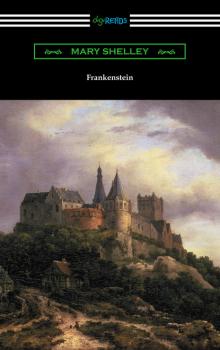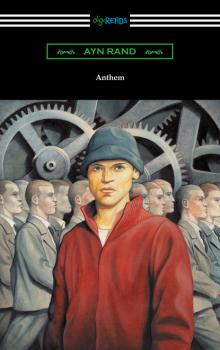ТОП просматриваемых книг сайта:
Зарубежная классика
Различные книги в жанре Зарубежная классика, доступные для чтения и скачиванияАннотация
A classic coming of age story, “Jane Eyre” is the tale of its title character, a poor orphaned girl who comes to live with her aunt at Gateshead Hall. While there she endures great emotional and physical abuse at the hands of her aunt and cousins. Jane subsequently ships off to Lowood, a Christian boarding school for poor and orphaned girls. The conditions at the school are quite brutal. The students are subjected to cold lodgings, poor food, inadequate clothing, and the harsh rule of the administrator, Mr. Brocklehurst. The maltreatment of the students is eventually discovered and after some changes life becomes more bearable. She eventually finishes her coursework and spends a period of time as a teacher at the school. After leaving Lowood she gains a position as a governess at Thornfield Hall working for Edward Rochester, a man whom she will eventually fall in love with. “Jane Eyre” is the story of one woman’s struggle to overcome adversity. The novel was revolutionary in its day for its examination of the internal conflict of its protagonist and for the way in which it addressed the themes of class, sexuality, and religion in the mid 19th century. This edition includes an introduction by May Sinclair and a biographical afterword.
Аннотация
Mary Shelley’s “Frankenstein” is the story of Victor Frankenstein, a young scientist who through a strangely unorthodox experiment creates a grotesque yet sentient being. Victor, repulsed by the thing that he has created, abandons the monster. The creature in turn saddened by this rejection, departs as well. What follows is a series of tragic events. There is no greater novel in the monster genre than “Frankenstein” and no more well known monster than the one that is at the center of this novel. However, the monster of “Frankenstein” is more than the common lumbering moronic giant that is most often represented. Frankenstein’s monster is in reality a thinking intelligent being who is tormented by a world in which he does not belong. In this depiction Shelley draws upon the universal human themes of creation, the nature of existence, and the need for acceptance. For it is without this acceptance that the true monster, the violent nature of humanity, emerges. This edition includes introductions by Sir Walter Scott and Mary Shelley, and a biographical afterword.
Crime and Punishment (Translated by Constance Garnett with an Introduction by Nathan B. Fagin) - Fyodor Dostoyevsky
Аннотация
Raskolnikov is an impoverished former student living in Saint Petersburg, Russia who feels compelled to rob and murder Alyona Ivanovna, an elderly pawn broker and money lender. After much deliberation the young man sneaks into her apartment and commits the murder. In the chaos of the crime Raskolnikov fails to steal anything of real value, the primary purpose of his actions to begin with. In the period that follows Raskolnikov is racked with guilt over the crime that he has committed and begins to worry excessively about being discovered. His guilt begins to manifest itself in physical ways. He falls into a feverish state and his actions grow increasingly strange almost as if he subconsciously wishes to be discovered. As suspicion begins to mount towards him, he is ultimately faced with the decision as to how he can atone for the heinous crime that he has committed, for it is only through this atonement that he may achieve some psychological relief. As is common with Dostoyevsky’s work, the author brilliantly explores the psychology of his characters, providing the reader with a deeper understanding of the motivations and conflicts that are central to the human condition. First published in 1866, “Crime and Punishment” is one of Fyodor Dostoyevsky’s most famous novels, and to this day is regarded as one of the true masterpieces of world literature. This edition is translated by Constance Garnett, includes an Introduction by Nathan B. Fagin, and a biographical afterword.
Аннотация
Oscar Wilde’s only full-length novel “The Picture of Dorian Gray” was first published in 1890 and is the classic tale of the moral decline of its title character, Dorian Gray. While Dorian has his portrait painted by Basil Hallward he is lectured to by Lord Henry Wotton, who espouses a hedonistic world view. Dorian is drawn to Wotton’s belief that beauty and sensuality are the only things in life worth pursuing and wishes that he would stay young while his portrait changes instead. In the years that follow Dorian pursues a life of vice and debauchery, committing unspeakable acts along the way. With the passage of time, Dorian’s wish comes true, as his age and withering moral character are reflected in his portrait instead of himself. “The Picture of Dorian Gray” is arguably one of Wilde’s most popular works, which caused quite a scandal in Victorian England when it was first published, for its glorification of decadency. A chilling tale, “The Picture of Dorian Gray” is at once both an intricate character study and a sharp criticism of the improprieties of the Victorian age. This edition includes a biographical afterword.
Madame Bovary (Translated by Eleanor Marx-Aveling with an Introduction by Ferdinand Brunetiere) - Gustave Flaubert
Аннотация
Gustave Flaubert’s “Madame Bovary” is the classic tale of its title character, Emma Bovary, the second wife of Charles Bovary, a well meaning yet plodding and clumsy doctor. Emma is an educated young woman who longs for the luxury and romance that she reads about in the popular novels of the day. When the two attend an elegant ball given by the Marquis d’Andervilliers, her longing for something more than the dullness provided by her own marriage can no longer be contained. In order to escape the banalities and emptiness of her everyday life a series of adulterous affairs ensue. “Madame Bovary” is considered by many as one of the greatest novels ever written. Although it was attacked for obscenity when it first appeared in Paris in 1856, “Madame Bovary” became an instant success for the author. Flaubert’s quest for literary perfection is greatly exemplified in the craft of this work, which has been heralded as a seminal work of literary realism. This edition follows the translation of Eleanor Marx-Aveling, includes an introduction by Ferdinand Brunetière, and a biographical afterword.
Аннотация
Often referred to as a “father of science fiction”, H. G. Wells was one of the first authors to write a type of speculative fiction which referenced the advancements in science of his time. Characteristic of Wells’s work is their warning against the unintended consequences of technological development gone too far. First published in 1896, “The Island of Dr. Moreau” is the account of Edward Prendick, an Englishman who finds himself stranded on an island in the South Pacific after being shipwrecked. The island is home to Dr. Moreau, an eminent physiologist from London who has fled England when his gruesome experiments in vivisection had been publicly exposed. Prendick soon learns that Moreau has continued his experiments on the island transforming animals into human-like hybrids called beast folk. Worrying that he may be next on the list of subjects, Prendick flees into the jungle trying to escape whatever gruesome plan that Moreau may have in store for him. “The Island of Dr. Moreau”, which was meant as a commentary on Darwin’s theory of evolution, is a most uncanny prediction of the ethical issues raised by the science of genetic engineering in modern times and a cautionary tale of the potential dangers of science when left unchecked. This edition includes a biographical afterword.
Аннотация
First published serially in 1894 and lengthened for the book publication in 1895, “The Red Badge of Courage” is a classic modern depiction of the psychological turmoil of war from the perspective of an ordinary soldier. The story revolves around Henry Fleming, a member of the 304th regiment of the Union Army, serving during the American Civil War. At the start of the novel Henry is eager to show his patriotism in battle but when faced with the savagery of death he flees the frontline. Ashamed of his behavior, Henry spends the rest of the novel trying to redeem his earlier cowardice. Instantly popular from its original publication, “The Red Badge of Courage” garnered what H. G. Well’s would refer to as an “orgy of praise”, bringing Crane instant notoriety in the United States and abroad. Noted for its unique style, the work has been described as at once naturalistic, realistic, and impressionistic. Although never having seen battle Stephen Crane vividly depicted the grueling intensity of war in his landmark work. This edition includes an introduction by William Targ.
Аннотация
Upon original submission of “Anthem” to Macmillan publishing the book was rejected on grounds that “the author does not understand socialism.” For the harshest of Ayn Rand’s critics this might as well be an analysis of all her work. However, for those who revere Rand’s work and subscribe to her particular philosophy of objectivism this novel could be set in the present day instead of some unidentified future in which mankind has entered a dark age characterized by irrationality, collectivism, and socialistic thinking. In this dystopian novella we find a world where technological advancement is now carefully planned and the concept of individuality has been eliminated. The central characters of the story are Equality 7-2521, a free thinking inventor, and his love interest, Liberty 5-3000. Like most dystopian works, “Anthem” describes a strange and unfathomable world which could never exist. It is in the creation of this extreme world that Rand creates a parable to warn us against what she believed were the perils of socialism. What is clearly a response to the oppressiveness of the Soviet Union, “Anthem” continues to resonate with those fearful of collectivist political philosophy gone too far. This edition is printed on premium acid-free paper.
Аннотация
One of the greatest novels ever written, “Anna Karenina” follows the self-destructive path of a beautiful, popular, and sensual Russian aristocrat. The lovely Anna seems set in a respectable marriage with the powerful statesman Karenin, yet their lack of passion breeds the discontent she fully faces upon meeting the elegant and affluent officer Count Vronsky. Soon convinced that allowing herself to deeply love this man will enable her to find the meaning and truth of her life, Anna defies the conventions of Russian society and leaves her husband and children for her lover. Tolstoy juxtaposes this ill-fated couple with the melancholy Levin and his new wife Kitty. Levin is also searching for the fulfillment and happiness in his life, and he ultimately finds a happiness that Anna’s love does not. A portrait of marriage and infidelity in imperial Russia, “Anna Karenina” explores love, life, and the depths of the human soul in a tale as illuminating as it is tragic. This edition follows the translation of Constance Garnett, includes an introduction by Nathan Haskell Dole, and a biographical afterword.
Аннотация
American author and expatriate, Henry James is regarded as one the principal figures of 19th century literary realism. His work, which often features Americans traveling to Europe, is noted for its intimate examination of the consciousness of his characters. In this volume we find two of his most popular works. “The Turn of the Screw” is an intense psychological tale of terror. Beginning in an old house on Christmas Eve, it is the story of a governess who comes to live with and take care of two young children, whose parents have recently died. The governess loves her new position in charge of the young children; however she is soon disturbed when she begins to see ghosts. “The Aspern Papers” is the story of an unnamed narrator who travels to Venice in search of Juliana Bordereau, whom he believes is in possession of some personal letters of the famous and now dead American poet, Jeffrey Aspern. This edition includes a preface by Henry James.










